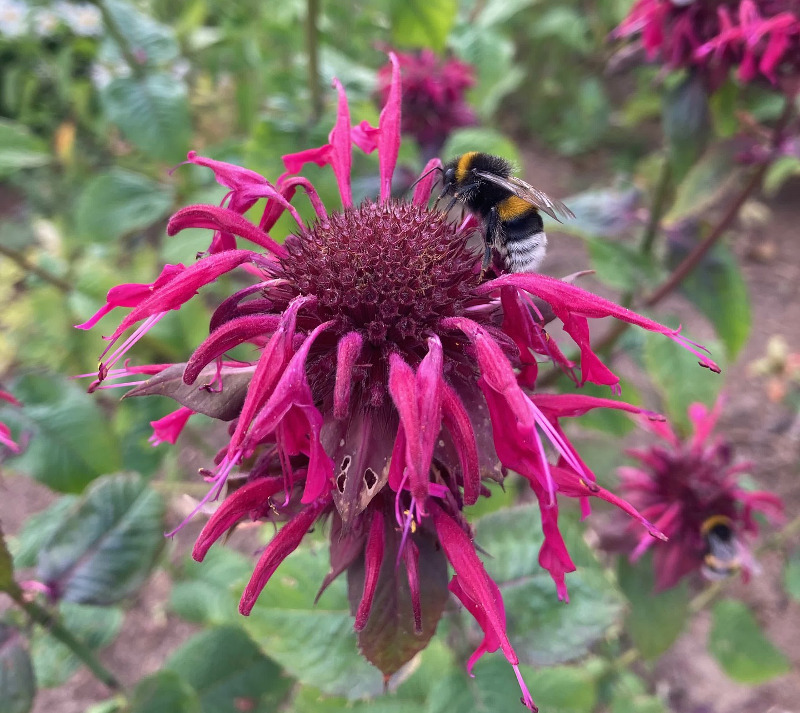Bee balm (Monarda) is a member of the mint family. Common names for bee balm are bergamot, horsemint, and Oswego tea. Bee balm flowers and leaves are edible. In fact, Native Americans use bee balm for many healing purposes. It’s leaves are used to make tea.
Bee balm is not poisonous for humans. In fact, eating the leaves will not harm a cat, dog or other animals in any way. Despite not being poisonous to animals, eating parts of any plant can cause digestive upset to an animal.

Are Bee Balm Poisonous to Children?
Bee balm is generally considered safe for small children; however, it is always wise to err on the side of caution. If you think your child has ingested the plant and you notice a rash or illness, it is a good idea to contact poison control (800) 222-1222.
Are Bee Balm Poisonous to Dogs?
Bee balm’s tall stalks, colorful flowers, and aromatic scent are attractive for your playful dog to roll around or rub against. The plant is considered safe for canines. Dogs will not eat the leaves because they do not like the taste. Bee balm is an ingredient in many herbal and holistic treatments and is used in medical applications for dogs.
It is important to note that pets struggle to digest most plant matter. Munching on excessive amounts of fibrous plant material can result in gastrointestinal upset, vomiting, and diarrhea.
Are Bee Balm Poisonous to Cats?
If you grow bee balm in your open garden area, you do not need to worry about your curious cat. Your feline will like to nibble on bee balm due to its strong taste and scent, but it is a safe herb for your feline. Of more concern is the chemical pesticides or soil used in the garden and exposure to the toxins. The first symptoms of poisoning are vomiting and diarrhea. Contact your vet if you think your pet has been poisoned.
Are Bee Balm Poisonous to Other Animals
Bee balm is a flowering herb in the mint family. It is deemed a non poisonous plant for horses and other farm animals. The bitter taste of bee balm leaves will deter most animals from munching on them. Livestock will not spend their time nibbling on bee balm when there are more appealing plants to graze on.
Symptoms of Bee Balm Poisoning
Always check with your doctor or veterinarian for guidance if you suspect bee balm or any other plant poisoning. Here are some common symptoms to look out for:
- Lethargy
- Weakness
- Vomiting
- Diarrhea
- Drooling
- Nausea
Pet Poison Helpline
If something were to happen to your animal, and you suspect that they are suffering from bee balm poisoning, there is a poison control hotline to call for 24/7 vet advice.
Pet Poison Hotline - (855) 764-7661
Click here for a complete list of Pet Safe Plants.
Sources:
"Monarda didyma." North Carolina Extension Gardener Plant Toolbox. plants.ces.ncsu.edu
"Monarda didyma - L." Plants for a Future. pfaf.org
"Spotlight On Bee Balm (Monarda spp.): A Magnificent Herbal Ally And Pop Orchard Plant." Philadelphia Orchard Project. phillyorchards.org
 |
Author Chris Link - Published 01-15-2021 |
